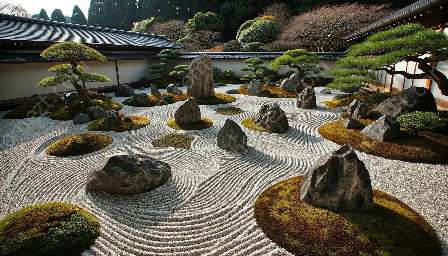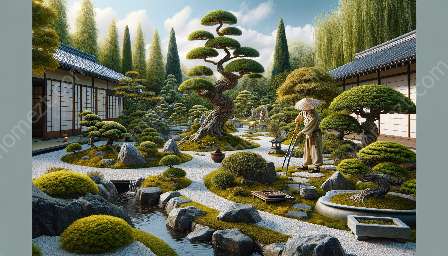The timeless allure of Japanese gardens lies not only in their design but also in the meticulous maintenance and pruning techniques that keep them looking pristine. Understanding the principles of Japanese garden design is crucial in guiding the maintenance and pruning process, ensuring harmony and balance within the garden space.
Understanding Japanese Garden Design and Principles
Japanese gardens are a harmonious blend of natural elements and carefully placed features. Central to their design is the concept of creating a miniaturized, idealized landscape that invites contemplation and serenity. The design principles typically include elements such as balance, simplicity, restraint, and symbolism.
Elements of Japanese Garden Design
- Water: Reflecting ponds, streams, or waterfalls serve as essential elements in Japanese gardens, symbolizing tranquility and renewal.
- Rock and Gravel: Strategically placed rocks and raked gravel represent natural formations such as mountains and rivers, adding texture and visual interest.
- Plants: Assorted plants, including carefully pruned trees and shrubs, are chosen for their seasonal beauty and symbolic meanings, often representing aspects of nature.
- Architecture: Tea houses, bridges, and lanterns are incorporated to provide focal points and enhance the overall aesthetic of the garden.
Japanese Garden Maintenance
The maintenance of a Japanese garden is an art form in itself, requiring attention to detail and a deep understanding of the garden's design and principles. The goal is to create an environment that reflects a natural, unspoiled landscape while providing a serene and contemplative space for visitors.
Pruning Techniques
Pruning is a critical aspect of maintaining the pristine appearance of a Japanese garden. The techniques used are often precise and tailored to each plant's growth habit and the desired aesthetic effect.
Techniques for Tree Pruning
- Niawaki: This traditional Japanese pruning method involves carefully shaping trees and shrubs to mimic the natural forms found in nature, emphasizing an organic and flowing appearance.
- Niwaki: Niwaki is a form of pruning that emphasizes the natural shape and growth habit of trees, encouraging an open structure that allows light and air to penetrate the canopy.
- Cloud Pruning: This intricate pruning method creates the illusion of clouds by meticulously shaping the foliage of trees and shrubs, often used to enhance the sense of lightness and movement within the garden.
Techniques for Shrub Pruning
Shrubs in Japanese gardens are pruned to create balance and harmony while emphasizing their natural form and seasonal beauty. Techniques such as selective pruning, thinning, and shaping are employed to maintain the desired aesthetic.
Maintenance Practices
Besides pruning, other maintenance practices such as raking gravel, cleaning water features, and tending to moss and other ground covers are essential to uphold the pristine appearance of the garden. Regular weed control and careful attention to the overall health of the plants contribute to a well-maintained Japanese garden.
Pruning for Harmony and Balance
Pruning in a Japanese garden is not merely about shaping plants; it is about creating harmony and enhancing the garden's overall balance. Each pruning decision is made while considering the visual impact, as well as the plant's health and natural growth tendencies.
Guided by Tradition
The art of pruning in Japanese gardens is deeply rooted in tradition and often guided by the principles of respect for nature and the pursuit of beauty in simplicity. The techniques and aesthetic considerations are informed by a cultural reverence for the natural world, resulting in designs that echo the tranquility and harmony found in nature.
Conclusion
Maintaining and pruning a Japanese garden is a labor of love that requires an understanding of the garden's design principles and a deep respect for nature. By employing traditional techniques and embracing the principles of Japanese garden design, gardeners can create and maintain an awe-inspiring space that offers tranquility, beauty, and a profound connection to the natural world.
















